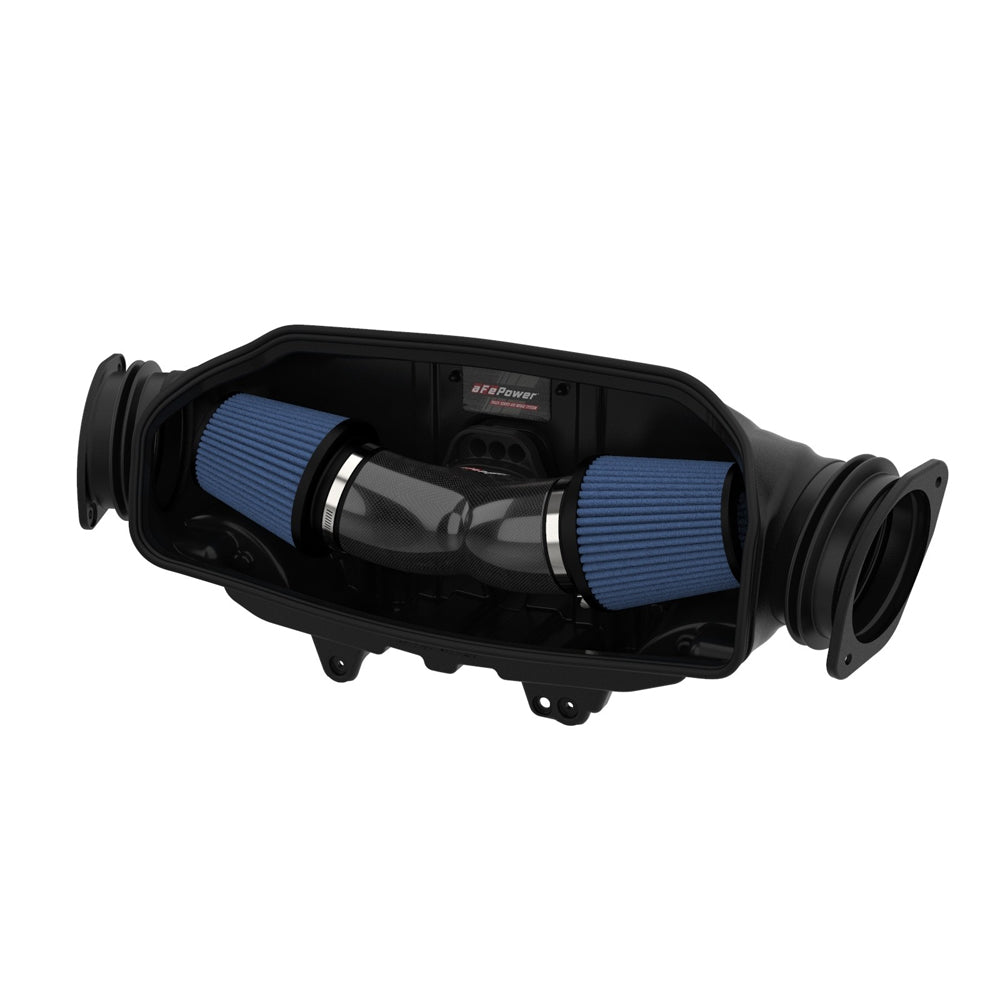The Chevrolet Corvette is a name synonymous with American muscle, speed, and performance. When it comes to getting the most out of your 'Vette, every detail matters, and one crucial component that often goes overlooked is the cold air intake. In this blog post, we'll explore the world of Corvette cold air intakes, why they matter, and how they can help you unleash the full potential of your beloved sports car.
- The Basics of Cold Air Intakes
Let's start with the basics. A cold air intake (CAI) is a modification that replaces the stock air intake system in your Corvette. Its primary purpose is to provide a more efficient and cooler air supply to the engine, which results in improved combustion and increased power output.
Here's how it works: Your Corvette's engine requires a precise mixture of air and fuel to operate efficiently. The colder and denser the air, the more oxygen it contains, leading to better combustion and, consequently, more power. A CAI achieves this by drawing in cooler air from outside the engine bay, where ambient temperatures are lower than under the hood.
- Benefits of a Cold Air Intake
a. Increased Horsepower and Torque: By delivering a steady stream of cooler, denser air to the engine, a CAI can boost your Corvette's horsepower and torque. Depending on your Corvette's make and model, you can expect gains of 5 to 20 horsepower or more.
b. Improved Throttle Response: Upgrading to a CAI enhances throttle response, making your Corvette more responsive to your inputs. This means a quicker acceleration and a more enjoyable driving experience.
c. Better Fuel Efficiency: Contrary to popular belief, a well-designed CAI can improve fuel efficiency. The improved combustion efficiency means your engine works less to produce the same amount of power, resulting in better miles per gallon.
d. Enhanced Engine Sound: Many Corvette enthusiasts appreciate the throaty growl that comes with a CAI installation. It's not just about performance; it's about the auditory experience as well.
- Choosing the Right Cold Air Intake
When selecting a cold air intake for your Corvette, it's essential to consider a few factors:
a. Material: Look for CAIs made from durable materials like aluminum or high-density plastic. These materials resist heat absorption, ensuring the intake stays cooler.
b. Design: Pay attention to the design and size of the intake. It should fit snugly in your Corvette's engine bay and have a clear path for airflow.
c. Filter Quality: A high-quality air filter is crucial for preventing contaminants from entering your engine. Reusable, washable filters are a good option for long-term savings.
d. Compatibility: Ensure the CAI you choose is compatible with your Corvette's make, model, and engine and is smog legal for CARB states.
- Installation and Maintenance
Most CAI kits come with detailed installation instructions, and many Corvette owners opt for DIY installations. However, if you're not comfortable with the process, it's best to have a professional mechanic handle the installation to avoid any potential issues.
Maintenance is relatively straightforward. Regularly inspect and clean the air filter, and check for any loose connections or damage to the intake system. Proper maintenance will ensure your CAI continues to deliver peak performance.
Conclusion
In the world of Corvette performance upgrades, a cold air intake is a relatively simple yet highly effective modification. By supplying your engine with cooler, denser air, a CAI can unlock the hidden potential of your Corvette, providing increased horsepower, improved throttle response, better fuel efficiency, and a more exhilarating driving experience.
If you're a Corvette enthusiast looking to take your car to the next level, consider investing in a high-quality cold air intake. It's a modification that's sure to bring a smile to your face every time you hit the accelerator and unleash the beast within your 'Vette.


